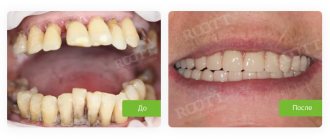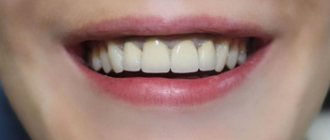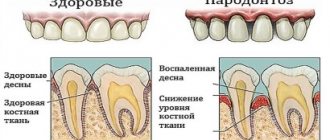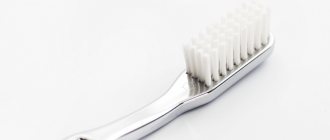Introduction
The information world is very huge. Each of us is haunted by a million points of view
for any problem in any field of knowledge, you just need to ask a search query. The same thing happens in medical circles on the Internet - discussions of health problems are widely represented by both patients and doctors and often reach the point of absurdity:
For example, in questions:
- loosening of the tooth,
- exposure of the neck of the tooth,
- why are my gums and teeth exposed?
that is, in situations where the gums on a tooth have receded, patients are always confused: they have periodontal disease
, then suddenly it changed to
periodontitis
, then periodontal disease returned again. And the search for an answer to the question becomes endless.
The problem of “how to treat periodontal disease” is picked up by doctors who only add fuel to the fire by recommending medications and even folk remedies for periodontal disease, without having sufficient competence to do so.
Let's consider these points of view professionally, and try to convey one simple truth, which for the vast majority of patients (and even some doctors) will be a revelation: the diagnosis of periodontal disease of the gums
» —
does not exist
.
An expert point of view is expressed by the famous periodontist, Doctor of Medical Sciences Laura Mikhailovna Tebloeva:
As a rule, for patients who come to me and say: “I have periodontal disease,” I always clarify - did you make this diagnosis yourself or did you see a doctor? Often patients answer that they have this information from their doctor. It turns out that the patient did not read somewhere and determine the diagnosis of “periodontal disease” for himself, but, unfortunately, such a diagnosis was made by a doctor.
Compresses
Compresses using medicinal herbs have a rapid anti-inflammatory effect, relieve bleeding gums and improve blood supply to the periodontium.
Highlander
An infusion of Polygonum is one of the popular folk recipes for the treatment of abscesses due to periodontal disease. Pour one teaspoon of herb into a glass of boiling water. Leave in a dark place for a couple of hours and the infusion is ready. This infusion is used for compresses only when hot. Soak a gauze pad generously with the solution and apply to the affected gums for 30 minutes. The procedure is repeated every other day until the symptoms of the disease disappear.
Plantain
Plantain is well known for its healing effect. It is especially useful to grind fresh leaves of the plant and apply the resulting pulp to the gums for 10-15 minutes. It is advisable to repeat the procedure up to three times a day. You can simply rub plantain juice into the affected areas.
Nettle
Nettle helps with bleeding gums. For a glass of boiling water, two or three teaspoons of dry herbs will be enough. It infuses for no more than half an hour. The strained solution is applied to sterile cotton wool, which is then applied to the gums. After 15 minutes, the compress is removed. The procedure must be repeated up to 3 times a day every day. The course of treatment is 14 days.
Aloe
To prepare a compress, you need to cut a fresh aloe leaf, rinse well and cut lengthwise. Apply it to the gum at night for 10 evenings in a row and it will heal.
There is another less pleasant, but more effective way to use aloe against periodontal disease. You need to chop a medium onion and 2-3 aloe leaves. This paste should be applied to a gauze pad and pressed firmly onto the area of inflammation. After the procedure, you should not eat, just rinse your mouth with sage infusion or saline solution. The duration of the method is 10 days.
Beet
Wash and peel fresh beets, peel and grate using the finest grater. Mix the resulting slurry with olive (or vegetable) oil in a 1:1 ratio. Apply the mixture to your gums and keep for at least 15 minutes. Repeat the procedure regularly several times a day for the purpose of treatment, and to prevent periodontal disease, use beets several times a month.
Always treat gum problems
When a patient comes to the doctor, he complains about something. What symptoms does he see a doctor with before receiving a diagnosis of periodontal disease? What worries him?
Literally, patients tell the doctor this: my gums have sagged, my gums have become exposed, my lower gums have receded. And for some reason the symptom of gum subsidence automatically means that the patient has the so-called. periodontal disease.
More experienced patients, who have already heard a lot of professional terms, who delve into the professional colloquial language of doctors, say this: “The necks of the teeth have become exposed a little, the teeth have become a little higher.” But, according to statistics, most patients complain about sagging gums.
And so, when patients come to the doctor with complaints about the problem of exposed tooth necks, the doctor diagnoses them with periodontal disease. Of course, he begins to treat them. And to treat it specifically for periodontal disease.
But time passes, money also goes away, and the question of why the gums recede and the necks of the teeth become exposed, why the gums recede, has not been resolved. And the patient still has periodontal disease.
Which doctor treats periodontal disease and periodontitis?
Periodontal disease and periodontitis are treated by a periodontist. The focus is on restoring the gingival junction and increasing blood circulation. When prescribing treatment, the doctor must take into account the individual characteristics of the patient, his age and the presence of systemic diseases.
Even if your teeth have started to become loose, this does not mean that they will definitely have to be removed. The doctor will try to preserve them in any case. If necessary, fixation of mobile teeth is carried out by screw splinting or splinting with flex arcs.
What tactics are used to treat periodontal disease?
I want to start with the fact that patients who come with a diagnosis of periodontal disease, they need, every single one, treatment... not from the periodontist to whom they initially turned.
If we talk about the tactics of managing patients with the so-called. periodontal disease, which then come to me again, it’s a shame to voice this, but the treatment of periodontal disease was carried out right up to injections of Lincomycin into the exposed gum.
According to statistics, almost always the treatment of periodontal disease in adults with medications is burdened with a course of some antibiotics and physical therapy.
And most importantly, the task of all these manipulations is completely unclear: what do doctors want to achieve in this way, to destroy some kind of flora or to stop some destructive processes in the gums? It is very difficult for me to say what happens to the competence of a doctor who injects antibiotics for the so-called. periodontal disease, but this is absolute blasphemy. Is it possible to cure periodontal disease by destroying the flora? As a result, the gums will never recover.
Treatment of gum periodontal disease reaches the point of absurdity
I would like to note the widest range of drugs and folk remedies that patients use to attempt self-treatment of periodontal disease at home. Among the folk remedies, one can note the treatment of periodontal disease with hydrogen peroxide, and even treatment with soda:
What about the use of various toothpastes for periodontal disease? What goals do patients have? The purpose of toothpaste is preventative, not curative. And no toothpaste will eliminate inflammation, because there is no such inflammation in periodontal disease.
It is not difficult to guess that in these combinations of procedures the question of how to cure periodontal disease remains open.
Rinse
This is a simple, but effective and affordable way to combat periodontal disease in traditional medicine. There are many beneficial plants that have a positive effect on affected gum tissue. Treatment with herbal infusions is very effective, provided that the rules are followed: before each rinse, you need to thoroughly brush your teeth, repeat the procedure 2-3 times a day (unless otherwise indicated in the recipe).
Oak bark
One of the most famous folk methods for treating periodontal disease is rinsing the mouth with oak bark tincture. It has astringent, anti-inflammatory and antibacterial properties, prevents bleeding gums and strengthens them. To prepare the decoction, in addition to oak bark, you will need linden flowers. Mix them in a 2:1 ratio, pour boiling water (a glass of boiling water per teaspoon of mixture). Let it cool, strain through cheesecloth, and rinse your mouth with the warm solution several times a day.
If you don’t have linden, try preparing an infusion using a simplified recipe: add one teaspoon of oak bark (chopped) to one and a half glasses of warm water and leave for 3 hours in a warm place. This infusion should be used 3-4 times a day. Such rinses will help soothe gums with periodontal disease, and will also be a good preventative against this disease.
Tea tree oil
Therapy of periodontal disease with tea tree oil is very effective due to the antiseptic properties of this plant. To prepare the solution, add 5-6 drops of oil to a glass of warm boiled water. You need to rinse at least three times a day.
Garlic
An infusion using garlic will strengthen your teeth and help in the treatment of periodontal disease. Pour a tablespoon of chopped garlic into a glass of hot black tea. Strain after half an hour of infusion. The duration of the rinsing procedure is from 5 to 10 minutes and should be repeated twice a day.
Tea mushroom
Kombucha infusion perfectly relieves inflammation in the oral cavity. Just rinse your mouth with the infusion, which is 7-9 days old. For greater effectiveness, you can add herbal tincture to the kombucha infusion. For example, prepare this: boil (no more than 5 minutes) 2 tablespoons of blackberry roots and blue cornflower flowers. Strain the resulting mixture and pour it into a jar with the same volume of kombucha infusion. After a couple of days, you can rinse your mouth with this solution twice a day.
Kalanchoe
Using Kalanchoe juice in the fight against periodontal disease reduces itching in the gums and significantly reduces their bleeding. First, rinse the leaves of the plant well and leave for a week in a dark, dry place at a temperature of about 10 degrees. Then grind them to a mushy mass and squeeze out the juice, which should also sit for several days at a cool temperature. Next, filter the liquid and mix with boiled water in a 1:1 ratio. Kalanchoe juice can also be used with sage infusion in a ratio of 1:3. These mixtures are used to rinse the mouth after every meal.
Sage
Try using 2.5% sage essential oil. It is enough to dissolve a few drops of this oil in warm boiled water and rinse your mouth after morning and evening brushing of your teeth. The bitter substances contained in sage significantly soften inflammation and restore damaged gum tissue.
St. John's wort
St. John's wort infusion for periodontal disease is a very effective means of reducing bleeding gums. Tannins and essential oils quickly relieve inflammation. 4-5 tablespoons of herb will be enough. After pouring boiling water over them, leave for 3-4 hours and strain. After this, rinse your mouth for several days in a row until the bleeding completely disappears.
Walnut
Walnuts are rich in oils that have wound-healing and bactericidal properties. To prepare a walnut infusion, you will need two teaspoons of its leaves and a glass of boiling water. Pour in and leave for no more than an hour. After the infusion is ready, strain it through cheesecloth. You should rinse your mouth with the resulting solution at least five times a day until the clinical symptoms of the disease disappear.
There is no inflammation with periodontal disease
When does the so-called periodontal disease, there is no inflammatory process in the gums. The clinical picture of “periodontal disease” differs sharply from periodontitis; it is with periodontitis of the tooth that inflammation occurs.
And injections into the gums, endless restorations of the necks of the gums - this is running in circles. Over time, again all the restoration fillings are chipped, and again these patients come to have these fillings restored again. And this happens endlessly
:
And the diagnosis of “periodontal disease” does not go away. As Desna ran away, she continues to leave. The fillings increase, that is, the teeth increase in size, because the gums sag more and more, and nothing useful happens.
When such a patient gets an appointment with me, unwinding his entire tangle of ordeals during the consultation, it becomes clear that all previously performed gum treatment consists of 3
factors:
- Lost time,
- lost money
- shattered hopes.
The diagnosis was incorrect and the treatment was appropriate for the incorrect diagnosis. What went wrong?
Patients should always go for a consultation with such a diagnosis... to an orthodontist
.
Because periodontal disease is an occlusal injury
.
What I see in these patients with signs of periodontal disease is a completely different diagnosis. This is an occlusal injury that can only be corrected by an orthodontist.
Honey and propolis
Beekeeping products should be mentioned separately. They can be used for rinsing, lotions, and for lubricating the oral cavity. They help relieve inflammation, nourish and heal the gums, and restore blood circulation in them.
First of all, propolis tincture is used in the treatment of periodontal disease. For rinsing, you need to add 20 drops of 10% tincture to a glass of boiled water. Rinse only after meals for 2 weeks. A 4% tincture is used for compresses - a piece of cotton wool is moistened in it and applied to sore gums 2-3 times a day. Simultaneously with the applications, take 20 drops of 10% tincture orally twenty minutes before meals.
Take a small piece of natural propolis, knead into thin strips in your hands and apply to the gums and leave on the gums overnight. Such applications need to be carried out at least 10 - every day or once every two days.
You can also try a week-long course of rubbing honey and ground cinnamon into your gums - this will increase blood circulation. To obtain the mixture, take one teaspoon each of cinnamon and honey and rub this mixture on the affected areas before going to bed. In the morning, rinse your mouth with warm water. This will strengthen loose teeth over time.
What is occlusal injury
Occlusal trauma is when a tooth experiences excessive stress due to:
- the tooth is not in the dentition,
- the tooth is not in the correct position,
- the tooth has not grown physiologically,
- the tooth is tilted, at the wrong angle.
The occlusion of the teeth is impaired. That is, when chewing in a patient with impaired occlusion, a destructive force of chewing pressure is created, and the bone tissue in the area of these above teeth begins to decrease.
What is chewing from a physiological point of view?
It's teeth hitting teeth. The strongest blow, since the masticatory muscles are the strongest in the body.
In simple words, in a patient, from such a hyper-impact, hyper-contraction of the masticatory muscles, which develops during chewing, from this beating of teeth against each other, the bone begins to contract. Bone tissue shrinks. And after the bone, the gum also contracts, because the bone and gum are tightly connected. The gum descends, following the bone. And here we answered the main question - why gums recede.
Let's now begin to form an understanding of the answer to the next question: what to do if your gums have receded.
Causes of periodontal disease
The main cause of periodontal disease is insufficient blood supply to periodontal tissues, which in advanced cases leads to their atrophy. Experts are inclined to believe that hereditary predisposition plays a significant role in this case.
Periodontal disease in most cases occurs in adults, already at an older age, and is accompanied by systemic diseases - cardiovascular pathologies, diabetes mellitus, endocrine diseases, and pathologies of the gastrointestinal tract.
If a person is predisposed to periodontal disease, smoking acts as a negative factor - nicotine binds oxygen and complicates its “delivery” to all tissues, including periodontium.
In old age, one of the causes of the disease can be hypovitaminosis, especially against the background of natural weakening of periodontal tissue. Malocclusion and abnormal tooth position also contribute to the development of the disease.
Orthodontics comes to the fore
Today, a huge mistake is happening both in the search for the causes of periodontal disease and in making a diagnosis, as well as in the method of effective treatment. Instead of putting the tooth into occlusion, removing it from a traumatic bite, patients are offered all these manipulations that I have previously voiced, which are not at all aimed at getting rid of these complaints, but only at the fact that patients are wasting time, the processes are getting worse.
In the treatment of the so-called periodontal disease is a big problem in the loss of time for inadequate treatment, and the loss of time for the patient is a complication of the pathology of dental occlusion, and the transition of the stage of the disease to a more advanced form.
If a patient, for example, three years ago had a loss of bone tissue of two millimeters, then due to the “treatment of periodontal disease” he has already lost five millimeters, that is, we have lost time.
And if he came to the orthodontist with a loss of bone tissue of two millimeters, then it would be easier to stop the loss of gums, it would be easier to eliminate the development of gum pathology after orthodontic treatment, when the teeth become aligned with the dentition.
We can already talk about the fact that we close all exposed necks of gum recession, thereby treating the neck of the tooth. But when patients waste time on treatments that are inadequate for the disease, sometimes closing the recession is no longer possible. Because there are also strict indications and contraindications for the treatment of gum recession.
Oils
In the treatment of periodontal disease, applications with sea buckthorn oil have a good effect. It is enough to twist a piece of bandage or cotton wool, dip it in oil and apply to the inflamed area for no more than 10 minutes, 2 times a day. If necessary, the procedure must be repeated daily for up to two weeks.
Fir oil will have no less effect. Usually it is mixed with fish oil or olive oil, applied to gauze and massaged into the gums for several minutes.
For massage it is good to use a solution of tea tree oil. A few drops of this essential oil are applied to the thumb and index finger and intensively massage the gums from the outside and inside for several minutes.
Apply a few drops of lemon, fir and eucalyptus oils to a gauze swab. Massage the area affected by periodontal disease for 5 minutes in the evening before bed after hygienic brushing of teeth.
Treatment and prevention of periodontitis at home
After successful treatment of periodontitis, it is necessary to pay increased attention to oral hygiene. To do this you should:
- Visit your dentist regularly to remove plaque and tartar;
- eliminate caries and fill dental canals at the slightest manifestation of pathological processes;
- use hygiene products designed to prevent gum disease;
- After each meal, use dental floss and mouthwash with an antiseptic;
- follow other rules for the prevention of periodontitis.
Bee products
Propolis and honey perfectly eliminate lesions, kill microbes and prevent their further development:
- mix 15 g of honey and 3 g of salt. Rub in carefully so as not to injure the mucous membrane. Can be used as applications;
- Stir 20 drops of propolis in 150 g of boiled water. Rinse as needed until symptoms improve;
- Take a small ball of propolis and dissolve it in your mouth until completely dissolved. Try to retain saliva for as long as possible. Repeat daily, before bedtime;
- Pour 100 g of propolis into a bottle of vodka, add calamus root (1 tablespoon). Leave for 3 weeks. Rinse 3 times a day;
- Take a piece of thick honey and massage it into the tissue. It improves blood flow and treats inflammation.
Asepta Parodontal - specialized products for the treatment of periodontitis
has developed a whole range of drugs for the treatment and prevention of gum disease. It includes:
- Asepta therapeutic and prophylactic toothpaste, which helps eliminate inflammation and bleeding of the gums. Contains a unique complex of medicinal extracts and active ingredients;
- Asepta Sensitive toothpaste for sensitive teeth. Provides gentle care for sensitive enamel and gums prone to inflammatory processes. Thermal mud in the paste helps heal damaged tissue and relieve irritation;
- Asepta mouthwash is intended to relieve symptoms of gingivitis, periodontitis, stomatitis and toothache caused by infection. The antimicrobial components of the drug help relieve inflammation and pain, and also have an antiseptic effect;
- Asepta Fresh mouthwash eliminates inflammation and bleeding of gums, prevents the formation of dental plaque, and also gets rid of pathogenic bacteria that cause bad breath;
- Asepta gel with propolis has an intense anti-inflammatory effect, reducing the sensitivity of enamel and promoting the healing of trophic ulcers. Effectively strengthens periodontal tissues and is suitable for patients of all ages.
- The adhesive balm in this series eliminates the causes and symptoms of inflammatory diseases of the mouth. The sticky base ensures a longer and more effective effect of the drug, allowing it to remain on the gums for a long time;
- Asepta vitamin and mineral complex contains all the necessary substances and active components for healthy teeth and gums.
Take care of your health with professional hygiene products!
Drug treatment
After removing dental plaque (this procedure is mandatory to exclude possible infection), the doctor prescribes general and local therapy. The patient is prescribed, depending on his condition and stage of the disease, immunomodulators, antibiotics (if necessary), and vitamin preparations. Medicines are selected individually, and if necessary, consultations with the attending physician on the underlying disease are prescribed.
In the acute stage of the disease and with pronounced atrophy of the periodontal tissue, the doctor prescribes targeted antibiotics - metronidazole or doxycycline. Treatment time and dosage are also determined only by the doctor.
The doctor may recommend a diet that will help compensate for the lack of vitamins of a particular group (in addition to vitamin complexes).
As local therapy, antiseptic treatment of the oral cavity is prescribed, including rubbing ointments and rinsing, as well as injections into the gums.








